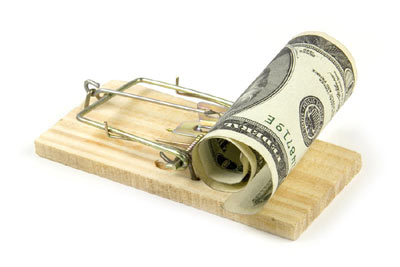
Graham, of course, was exaggerating to make a point, namely, that you should buy and sell securities based on their value--not on your mood or your gut feelings.
But every once in a while, the market really does lose its mind. And when it does, the illness tends to last so long that it begins to seem normal, even to ordinarily savvy investors. So it was in the late 1990s with tech stocks. And so it is today with the bond market.
Let's start with the basics. When you buy a bond, you essentially lend money to a company or government with the promise that it will pay you some interest and repay the IOU in full at maturity.
A bond's yield-in simplest terms, the interest it pays as a percentage of the price of the bond--should depend on three things:
- 1. The odds of the issuer repaying you when the bond comes due. The more concern about an issuer's staying power, the more the issuer has to pay lenders.
- 2. How much the dollar's purchasing power will shrink between now and the time the bond matures--in other words, expectations of inflation.
- 3. The maturity of the bond--that is, the length of time before you get your money back from the issuer.
Once these things are determined, you should add a little bit to allow yourself some profit on your investment. That's the commonsense way to value a bond.
Now consider the 10-year Treasury bond, which is the benchmark for the U.S. bond market. Almost all other bonds key off its yield. It currently yields 1.99% (all yields are as of
The chance that Uncle Sam will default on his obligations is extremely low. So for Treasuries, "credit risk" is not especially important.
The next question is: How much will your dollar be worth in 10 years, when the IOU matures? Thanks to the collapse of oil prices, inflation has been tepid lately. The consumer price index rose just 0.8% in 2014. But since 1926, inflation has averaged about 3% annually, with much higher readings in the late 1970s. So why would you expect inflation to be 2% over the next 10 years--a rate of price increases that would allow you simply to break even on the 10-year Treasury at its current yield (and we're not even considering the impact of income taxes)? Mild inflation, 2% or so per year, is a fact of life in modern economies--and a target that central bankers aim for. But in a healthy economy, inflation tends to overshoot 2%.
And six years after the financial crisis, the U.S. economy is beginning to look positively robust. Real gross domestic product has risen between 2.6% and 5% in five of the past six quarters. The economy has created an average of 250,000 new jobs a month over the past year. The unemployment rate has fallen to 5.7%. Auto sales are running at an annual pace of almost 17 million vehicles. Bank loan volume increased almost 8% in the past year. And thanks in great part to the plunge in gasoline prices, consumer confidence is at an 11-year high.
The Federal Reserve is gingerly preparing the markets for its first rise in short-term rates since the financial crisis. In sum, all signs point to bond yields rising.
Yet the 10-year Treasury today yields less than it ever has since 1870--except for a brief dip in 2012. The 10-year never traded this low during the Great Depression, when the economy was beset by deflation. Over the past 75 years, the economy has experienced almost uninterrupted increases in prices, yet today's 10-year Treasury is pricing in virtually no inflation. Perhaps that's why the Treasury yield has climbed so sharply since bottoming at 1.65% on
Now consider
European investors have poured money into U.S. Treasuries to get their relatively attractive yields and to profit from the surging U.S. dollar. (Investments in Treasuries and other dollar-denominated securities translate into more euros, yen and other currencies as the buck gains strength.) That has pushed Treasury yields ever lower.
As yields fall, bond prices, which move in the opposite direction, have reached absurd heights. I've been wrongly predicting that yields would rise for years, so I can't tell when this madness will end. But a rise in yields on the 10-year Treasury of just one percentage point would cause its price to plunge about 9%. A two-percentage-point bump in yields would cause almost double the damage.
What should you, the investor, do about all this? Stick to bond funds with relatively short average maturities. If you're willing to take some risk, buy funds that invest in some lower-quality corporate bonds. I recently wrote about my five favorite bond funds for 2015. I still like them. They won't make you rich, but neither will they send you to the poorhouse.
Comment by clicking here.
Steven T. Goldberg is an investment adviser in the Washington, D.C. area and a contributing columnist for Kiplinger. .



 Contact The Editor
Contact The Editor
 Articles By This Author
Articles By This Author